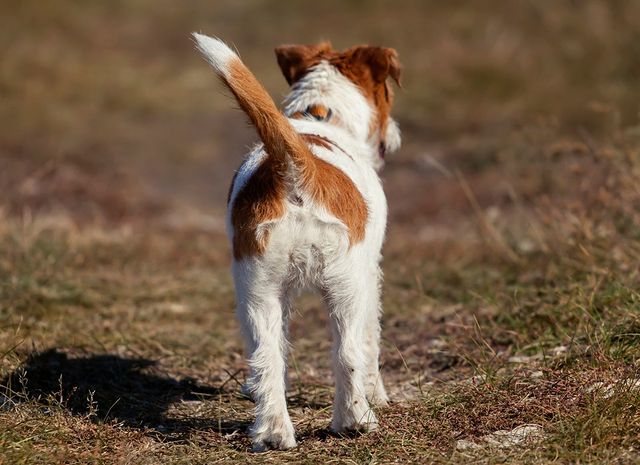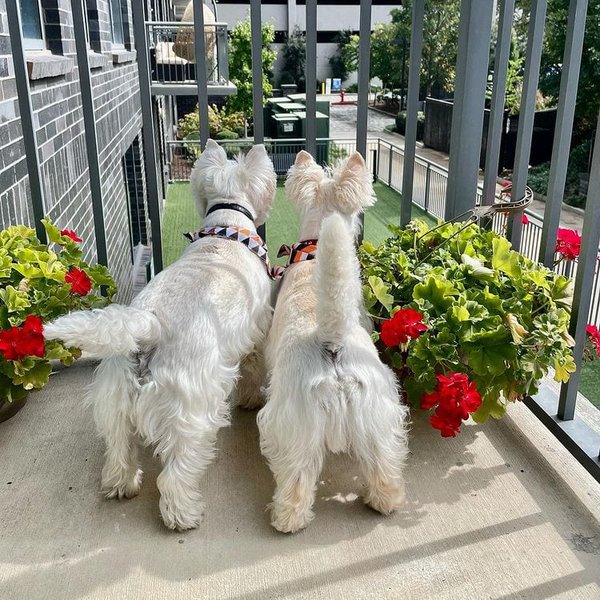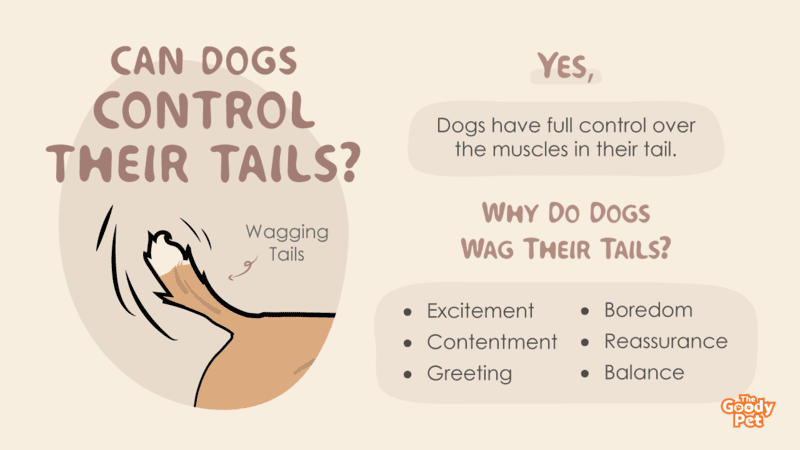Tail-wagging is one of those habits that sort of makes a dog a true dog. You have probably seen it all by now, from your pooch wagging their tail in excitement when you come home to them wagging their tail wildly as they chase the ball you asked them to fetch.
What still baffles many dog owners to date is whether or not dogs actually wag their tails on purpose or subconsciously. The best answer to whether dogs can control their tails is an absolute yes. However, tail wagging is not always a result of a conscious effort.
In the sections below, you will learn all you need to about the wagging behavior, from how dogs do it to the possible reasons why. That way, you will understand your dog a lot better and even know when wagging is a cry for help.
Do Dogs Wag Their Tails Voluntarily Or Involuntarily?

When it comes to the question of whether your dog wags their tail voluntarily or involuntarily, the answer is a bit of both.
Dogs have full control over the muscles in their tail and can control whether or not they wag, how fast or slow they do it, and even the height and straightness of the tail during wagging.
Most dog breeds start wagging about 3 or 4 weeks of age and use this habit as a way to communicate with their mother, their siblings, and later on with their human companions.
While control of the tail and wagging is generally voluntary for the dog, it can sometimes be subconscious. Think of it as breathing or even walking for humans. We have control over our breathing and our legs as we walk but do not always make these actions on a conscious level.
Tail-wagging out of excitement or other reasons like playfulness or being relaxed are more often than not subconscious to the dog.
Why Do Dogs Wag Their Tails?

Whether on purpose or subconsciously, dogs wag their tails for a number of reasons. Here is a quick overview of some of the most important of these reasons so that you know what your dog is trying to tell you the next time they shake their tail at you.
Excitement
Wagging has pretty much become synonymous with excitement in the minds of most dog owners as it is the most common reason why dogs do it. Your dog may do this when you offer treats, praise, or even just your attention.
In addition to wagging their tails, excited dogs may also pace around restlessly, pant, and become increasingly vocal.
Contentment
A happy dog does not need any other reason to wag their tail other than the fact that they are content. Other signs your dog is happy to include physical clinginess, calm staring, and using you as a pillow or doggy bed.
All these are signs that your dog feels safe and loved, which means that you are doing something right as the doggy parent.
Greeting
If you notice that your dog usually wags their tail as they welcome you home from work or errands, it could be their way of saying hello. In these cases, the dog will be otherwise calm except for their wagging tail as they wait for you to come in and settle down.
Boredom
Dogs will do pretty much anything to entertain themselves when they feel bored, and this includes wagging their tails. This is usually accompanied by other forms of tail-play, including chasing and nibbling at their own tails.
The wagging, in this case, is used as a form of visual stimulation to make the tail more fun to play with.
Reassurance
Another common reason why dogs wag their tails is to reassure strangers, including unfamiliar animals, that they mean well. The friendly gesture is meant to put the other pet or person at ease and will be accompanied by a very calm yet alert demeanor.
Balance
If the tail wag is slow and somewhat stiff, chances are that your dog is simply using their tail to balance and not necessarily trying to pass a message to you or other pets.
This is common, especially with dogs that have long and strong tails that offer great balance as the dog runs or jumps.
Should You Stop Your Dog From Wagging Their Tail?
Tail-wagging is completely harmless both to your dog and to you or other individuals around the dog. There is, therefore, no reason to have to stop your do from wagging their tail.
In fact, the chances are that anything you try to stop your dog from wagging their tail will only end up exciting them and causing them to work more intensely.
However, if, for one reason or another, you cannot stand excessing tail-wagging by your dog, your best bet to stop it is by distracting the dog. This could be done simply through physical contact, whether it is patting their head or rubbing their belly.
You could also try redirecting their excitement. Here, activities like games with their favorite toys or exercises like running are your best option when it comes to getting your dog to stop wagging its tail.
Whatever strategy you try, just bear in mind that there is a subconscious aspect to the tail-wagging. Therefore, there is a good chance that no amount of commanding or distracting may work, as the dog doesn’t even realize that they are doing it.






